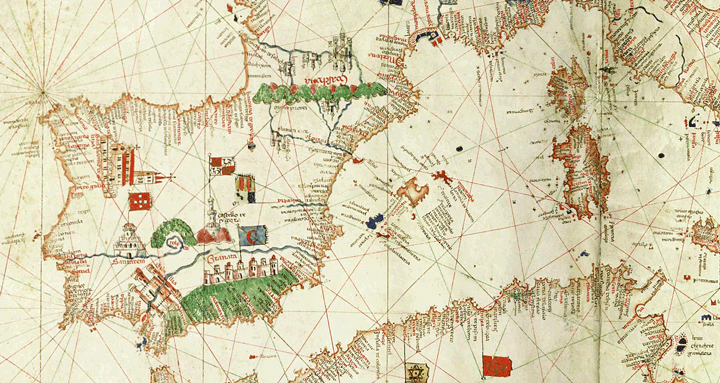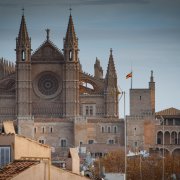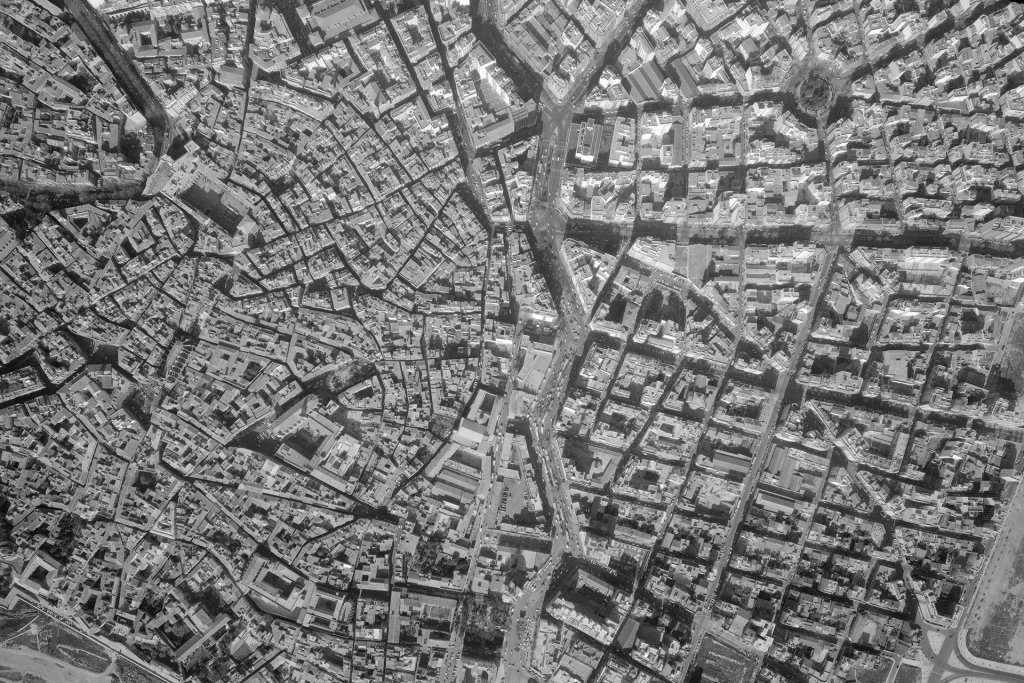Overview
Living in the Old Town of Palma is quite an experience!
It has always been a very interesting place to live. Come and discover the place in which you can enjoy a lot of surprises in every corner, explore the streets by knowing its history and get lost into the map of Palma as it was several decades ago.
A brief history of the Old Town
The Mediterranean has always been a cradle for cultures. During the first millennium b.C., this sea saw the birth and growth of some of the most important civilizations of the ancient times.
[ ]
]
Portolan chart by Albino de Canepa. Credits: Biblioteca James Ford Bell
The Balearic Islands have occupied a remarkable place in History because of its privileged location in the West of the Mediterranean. This situation made it a common path and port of call for Phoenicians, Greeks, Carthaginians, Romans, Arabs, etc. who travelled from the West of Iberian peninsula. That's why Balears, and especially its capital Palma, have been a place where many different people have settled, thus giving shape to a rich and special nature. Not only in its people, but also in its towns and cities. Palma, the main dwelling in Mallorca and the Baleares, is a good example.
The city of Palma was founded by the Romans after it was conquered by Quintus Caecilius Metellus Pius, the year 123 BCE. After the fall of the Roman Empire, many people occupied the city: Vandals, Byzantines and finally, at the beginning of the tenth century, the Arabs. There are few remains of their presence in the city nowadays, except in museums.
After three centuries of Islamic domination, in 1229 Mallorca returns to its Christian origins, after the conquer by the King of Aragon, James I. After a short period of independence, during which Mallorca was ruled by its own kings (1276-1343), the Balearic Islands joined the Aragon Crown again. During this period (XIII-XV centuries) the most emblematic buildings in Palma were built: the Cathedral, La Lonja, the Castle of Bellver, the Santa Eulalia Church, etc. All of them are gothic style.
After a period of stagnation (XV-XVI centuries) the city of Palma bloomed with strength in the Baroque era. This style, together with the Gothic, are the artistic styles that dominate the old town of Palma. Many churches attest to this.
Finally, modernity let us the influence of Modernism. At the beginning of the 20th century, some of the most acclaimed catalan modernist architects carried out projects and constructions in our city (Gaudi in the Cathedral, Doménech i Muntaner the Gran Hotel -currently Fundación La Caixa-, giving a distinctive and peculiar element to the already special nature of the old town.
Why live in the Old Town of Palma?
After this brief historical and artistic sketch of the city of Palma, let us give you some reasons why it's so attractive to live in the Old Town of the city.
The first is its amplitude. It's not just a couple of streets where the whole is contained. Far from it! Dozens of streets and squares make up a surprisingly big area. Walking them becomes a delicious experience.
Secondly, we must point out that the Old Town is in pretty good condition. The city is fairly better conserved than many others in Spain. There are few modern buildings that disfigure the set.
Last, but not least: the Old Town of Palma is "alive". Many beautiful historical cities have become open-air museums, where almost nobody lives, no shops, no markets, no pubs or restaurants. This is no the case for Palma. Except for the Cathedral surroundings, probably the most beautiful part in the city, the rest is alive. You can go to the groceries, have lunch in pubs and restaurants, go shopping, cut your hair, visit a museum, etc. This is maybe the reason that makes living in the Old Town of Palma a unique experience.
Old Town Street Map
See how the Old Town of Palma looked like back in the 50s, take a walk on the streets and discover how the city has changed throughout the years.
What to do in the Old Town of Palma
Un desayuno, una barbacoa bajo las estrella, o, ¿por qué no? Una siesta con todo el sabor mediterráneo. ¿Por qué no tenerlo todo? Las zonas de La Lonja y Santa Catalina te ofrecen un abanico de posibilidades gastronómicas, así como bares y clubes para escuchar música y bailar. Podrás elegir desde lugares pintorescos y típicos a otros modernos y elegantes, cualquier día de la semana.







